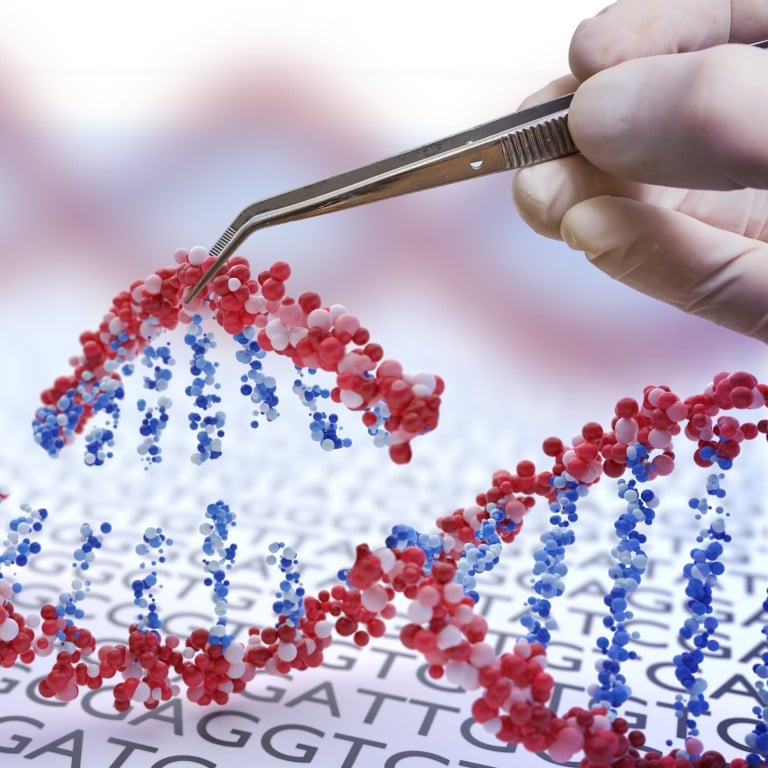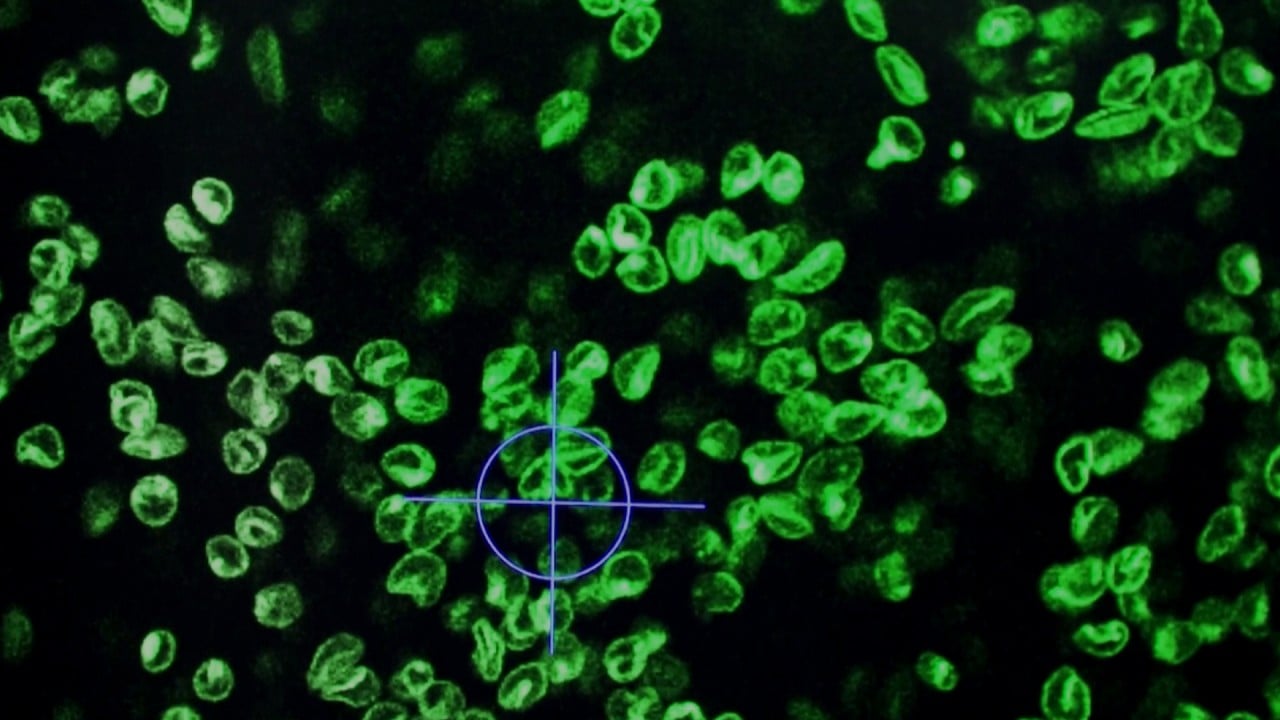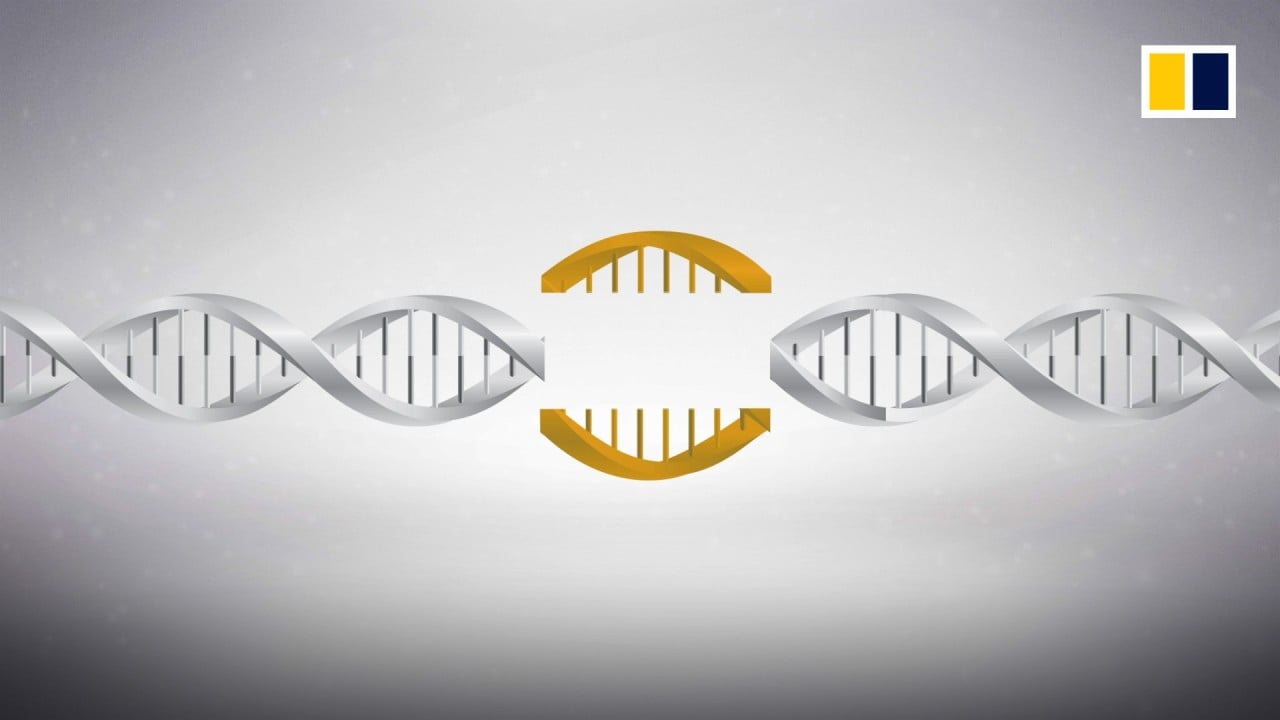
Chinese scientists develop new gene-editing tool that differs in approach to CRISPR-Cas9
- ‘Base editors’ fix specific sites in the genome without cutting the DNA double helix, according to team
- ‘Now we have an independent intellectual property system for base editing and we can apply it for free,’ study author says
Chinese researchers have developed a new gene-editing tool they say is ultra precise, safe and has potential to treat or even cure some genetic diseases.
The first base editors were proposed in 2016 by a team led by David Liu at Harvard University. The Chinese team used a different approach that they say can achieve the same results, which could enable China to challenge US leadership in this field.
Their study was published on May 16 in the peer-reviewed journal National Science Review that comes under the auspices of the Chinese Academy of Sciences.
“It means we have established a system of our own, which is essential for clinical and commercial application,” said Yang Hui, corresponding author of the study and a researcher with the Centre for Excellence in Brain Science and Intelligence Technology of the Chinese Academy of Sciences.
The study is also important for the development of disease models in basic research and in the field of gene therapy, according to the authors.
CRISPR-Cas9, a natural defence mechanism used by bacteria to ward off viral attacks, is one of the most important scientific discoveries of this century. Two scientists – Emmanuelle Charpentier, director of the Max Planck Unit for the Science of Pathogens in Berlin, and Jennifer Doudna, a professor at the University of California, Berkeley – won the 2020 Nobel Prize in Chemistry for developing the gene-editing tool.
However, CRISPR-Cas9 has its shortcomings. Because it relies on the cell’s self-healing mechanism to rejoin the broken strains, it may result in off-target effects, such as chromosomal rearrangements or large DNA deletions, which may cause safety concerns.
China issues ‘most comprehensive’ bioethics rules since gene-edited baby scandal
Scientists have discovered a method to precisely correct the misspelling of one individual DNA letter, or “base”, by using base-editing technology. There are four bases in DNA – adenine (A), cytosine (C), guanine (G) and thymine (T) – and they are supposed to be matched in specific pairs: A with T, and C with G.
By using CRISPR scissors but disabling the ability to cut DNA, Liu’s team attached a protein that could perform chemical reactions on the DNA base, enabling it to convert C to T, or A to G, for example.
Base editors could correct four of the most common types of misspellings that occur in DNA, accounting for about 30 per cent of all known disease-causing DNA errors, Liu told The Conversation in April.
Yang said: “CRISPR-Cas9 is like a pair of scissors that can cut the DNA, which may result in the deletion or insertion of base pairs, while base editing is like a pencil and eraser that can erase one base and change it into another.”
But in previous studies, deamination – the removal of an amino group from a molecule – was the first step in base editing, he said.
“Previously, scientists used chemical reactions to deaminate adenine or cytosine. When the body discovers the bases are mutated, it has a series of mechanisms to repair them to convert from one base into another one,” he said.
“People’s perception is that deamination is the first step of base editing, but we break the inherent concept by finding another enzyme – the glycosylase – that can also perform base editing.”
More importantly, Yang said the previous method could not directly correct guanine, but the new base-editing approach made the guanine editing possible.
“Now we have an independent intellectual property system for base editing and we can apply it for free to do any base-editing modifications,” Yang said.
He added that base editing had already become a major tool to treat genetic diseases.
“More than half of all human genetic mutations are caused by a single-base mutation, so base editing can precisely fix these mutations,” he said.
Chinese scientists say new cell editor could speed up genetic disease therapy
Clinical trials of base editing are being conducted to treat some genetic diseases, including sickle-cell disease, the blood disorder beta-thalassaemia and cardiovascular diseases.
Last year, a patient in Britain with T-cell leukaemia was treated with a base-edited cell therapy – the world’s first application of this technology.
“As gene-editing tools continue to advance, more rare diseases will be able to go to clinical trials and be solved by scientists and biomedical companies,” Yang said.



